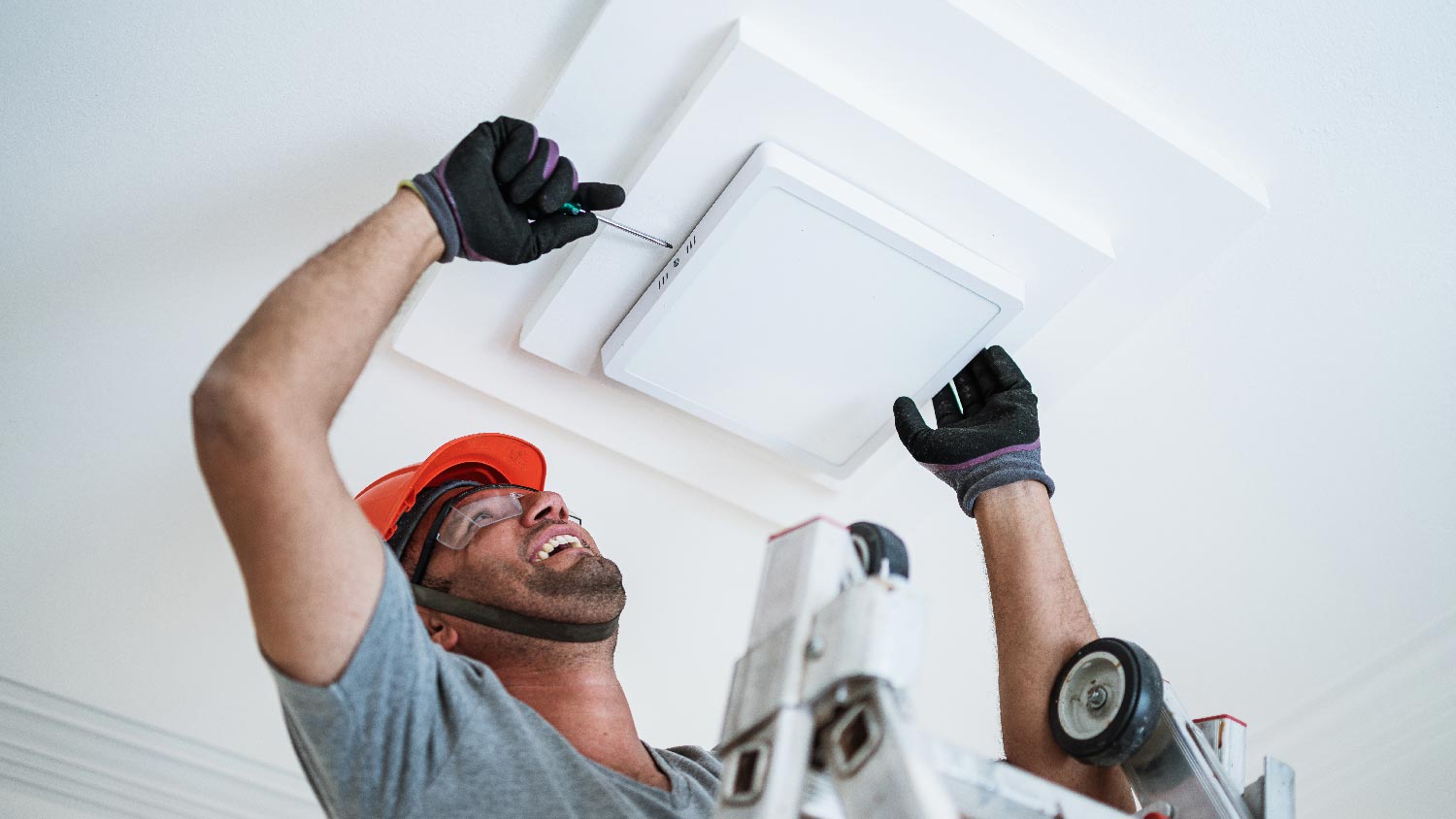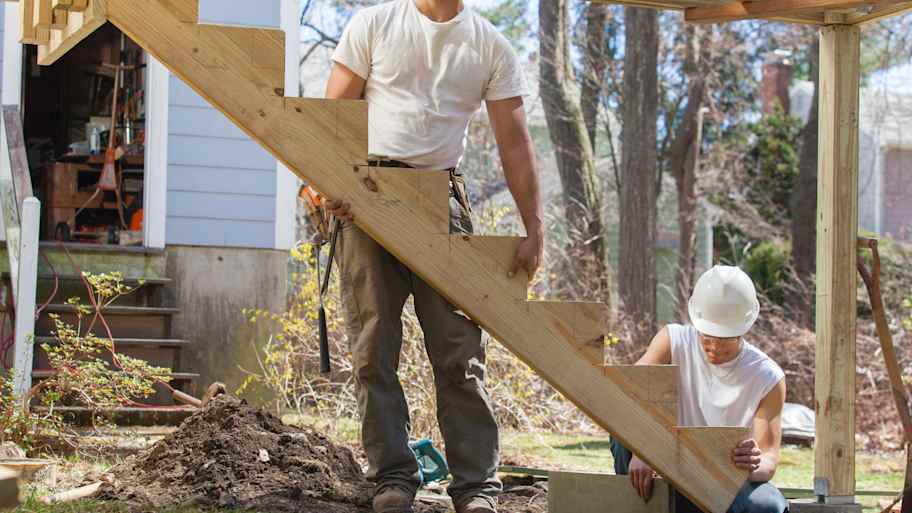
Looking to turn your yard into a hockey or ice skating paradise this winter? Use this backyard ice rink cost guide to see what the installation will total.
Let’s shed some light on what people actually pay for utilities


The average U.S. household spends $430 per month on all utilities.
While the average monthly electricity bill is just under $140, the average cost of water is $73 per month.
Homeowners with natural gas spend a bit below $65 per month.
Those who invest in a cable package, complete with Internet, cable, and phone services, pay an average of $225.
Additional utility-related expenses you might face include furnace maintenance packages between $150 and $500, and cables and modems, which cost up to $20 to rent and up to $350 to buy.
You don't know the true cost of owning a home until you've factored in utilities. The basic ongoing monthly and annual costs to keep a home operating, safe, and comfortable are called utilities. How much are utilities for a house? Utility costs can vary by location, property size, the age of a property, and the condition of a property. With the average household spending $430 per month on all utilities combined, utility costs account for about $5,000 in the average annual household budget in the United States. Keep reading to learn about all of the factors that determine a home's utility costs.
| Location | Typical Cost |
|---|---|
| California | $490 |
| Texas | $456 |
| Florida | $411 |
| New York | $479 |
| Pennsylvania | $367 |
| Illinois | $339 |
| Ohio | $470 |
| Georgia | $410 |
| North Carolina | $335 |
| Michigan | $419 |
| Low Cost | Average Cost | High Cost |
|---|---|---|
| $320 | $430 | $520 |

The average household pays for up to a dozen different utilities. Most utility providers break payments up into monthly totals to allow for predictable costs throughout the year. However, other utility costs are based on usage. Here's a look at the average costs homeowners can expect to pay for common home utilities.
The average monthly electricity bill in the United States is just below $140. Most people pay their highest electricity bills during the summer. According to the U.S. Energy Information Administration, average U.S. hourly electricity load peaks during the summer months. This is largely due to the use of air conditioning in 87% of homes.
The average monthly water cost for households in the United States is $73. This total represents an average usage of 100 gallons per day for each household member. Overall, a household will spend around $876 on water use in a year.
Across the United States, 61% of homes use natural gas for at least one energy end use. Roughly half of all homes use natural gas for heating. Natural gas can also be used for cooking via stoves, ranges, and cooktops. With the average gas bill in homes that use natural gas coming in at just under $65 per month, a household might spend $780 for gas for the year.
Costs for heating oil can vary by year due to the volatility of the oil market. Generally, homeowners pay a variable price per gallon to fill up their oil tanks. Many oil providers allow homeowners to "lock in" rates at the start of the winter season in order to enjoy more predictable pricing for the year. The average household can expect to pay between $1,800 and $1,950 to heat their homes with heating oil for the year.
Only around 5% of homes in the United States rely on propane for heating and cooking. Propane furnaces are more popular in rural areas where hookups for natural gas are not offered. The annual cost of using propane utilities is between $2,000 and $3,000.
If your home has a sewer hookup, you will be charged a sewer bill by your municipality. Bills are usually sent four times a year. While sewer bills in some areas are determined by each household's water usage, others rely on flat rates. The average annual sewer bill across the country is $125.
Also known as the monthly "garbage" bill, costs for curbside trash and recycling pickup can vary based on how frequently trash is collected. The average annual cost for weekly pickup is $400. Meanwhile, homeowners are paying closer to $225 per year for biweekly pickup. In some towns across the country, waste collection is actually covered by property taxes.
While the "house phone" has become less common, many people still rely on a landline to stay connected. The average cost for a landline today is $38 per month. This fee generally includes call waiting, caller ID, and voicemail. If you want long-distance coverage included, the average cost for a plan is closer to $45 per month.
As more and more options pop up, television utility services and streaming are increasingly taking deeper cuts of the average household budget. The average cable package that bundles Internet, cable, and phone costs $225 per month. Plans that include just television and Internet cost $210 on average. Television-only plans cost $78 on average. When it comes to streaming, the average household is paying between $48 and $75 per month for their preferred streaming services. Finally, customers who opt for satellite television are dishing out between $75 and $130 a month for dish service.
While many households lump Internet costs in with the monthly cable bill as part of a package, others prefer to sign up for standalone Internet and Wi-Fi plans. The average cost around the country for Internet service is $64 per month. While most people around the country are connected to cable and fiber Internet, some customers are still paying as little as $10 per month for dial-up service.

Monthly utility costs only tell part of the story. For most of the utilities we use every day to keep our households running, a variety of one-time fees and service charges should also be factored into the total cost. Here's a look at some extra utility-related costs to consider.
Most companies that provide oil and natural gas offer customers annual maintenance packages. For a one-time annual fee, a homeowner gets an annual inspection and emergency repair services covered. With these plans ranging in price from $150 to $500, they often pay for themselves with one visit.
Most providers charge monthly rental fees for modems and routers that range from $15 to $20. If you prefer to purchase this equipment on your own instead of renting it, the cost ranges from $100 to $350. You will generally need to replace your hardware every five years to ensure optimal speed and performance.
Household utility rates are dependent on a number of factors. In fact, you may be paying vastly different bills than your neighbors. Here's a look at the top factors that determine utility costs.
Utility costs vary all over the country for a number of reasons. First, areas with a high cost of living tend to have higher utility rates. However, living in a remote area can also increase utility costs due to the fact that providers may charge higher service fees. You may also have fewer options if you live in a rural area compared to a densely populated area. For example, people in rural or remote areas often have just one option available for cable and Internet. This makes comparison shopping for these utilities essentially impossible. Access to fossil fuels can also impact rates for electricity and heating.
Living in a place that experiences extreme summers or winters can hit you in the pocketbook when it comes to utilities. For people in the Northeast, Midwest, and some of the Mountain States, winter weather brings the need to constantly run the heat. People in states with extreme heat during parts of the year pay more for electricity to run air conditioning in the summer. What's more, "air conditioner" months often range from May through October instead of being confined to the summer months.
People who own larger homes pay more to heat and cool their homes. While open floor plans and vaulted ceilings may look attractive, heated and cooled air in these homes tends to be wasted. Larger homes also require larger furnaces and cooling systems to circulate the amount of air needed to reach every part of the home.
While square footage plays a big role in determining utility costs, the number of people in a household of any size will also play a role. Most average costs for utilities are based on usage for a four-person household. Costs may increase up to 25% for each additional household member.
The amount of time you spend at home can influence how much you pay for utilities. For example, someone who works from home may pay significantly higher utility bills because they are keeping lights on all day. "Night owls" can also pay more for utilities because they are using electricity for extra hours each day. Keeping lights on, keeping the thermostat high, watering the grass with a sprinkler system, and taking long, hot showers are just some of the daily habits that can impact utility costs.
Older homes tend to be less efficient than newer homes. According to the Energy Information Administration (EIA), homes built in the United States after the year 2000 are more energy efficient than those built before 2000. As a result, many people living in older homes are suffering from draftier conditions while still paying more than their neighbors with newer homes. While there are many upgrades that can be made to older homes to improve efficiency, insulation can save you money in a significant way by immediately lowering those heating and cooling costs by 15%.

While we can't always control what service providers charge, homeowners do have some control when it comes to their utility bills. In some cases, homeowners need to invest in major projects to cut utility bills by making their homes more efficient. In other cases, simply changing some habits can slash monthly utility costs. You don't even have to DIY to save a dime here because most projects that reduce utility bills can be done by your local handyman services.
If you've determined that drafts are coming through older windows and doors, investing in upgrades could help you enjoy a well-insulated home with lower energy costs. The average cost to install a new exterior door is between $547 and $2,123. Meanwhile, most homeowners pay $400 per window to upgrade to new energy-efficient windows.
Sealing floorboards in older homes can be a simple way to keep drafts out. Many people don't realize that gaps in floorboards can allow cool air to penetrate through the cracks. Sealants and foam products that can be pushed into floorboards can do the trick.
Adding insulation is one of the most cost-effective ways to lower utility bills. Homeowners in drafty and poorly insulated homes are essentially throwing money away every month because treated air is escaping through the walls and attic almost as soon as it cycles through the home. The average insulation cost is between $1,065 and $2,594. While the most common way to save money on energy is to insulate the attic or ceiling, many homeowners also insulate garage doors to maximum efficiency.
Lighting accounts for roughly 15% of a home's energy usage. According to the U.S. Department of Energy, upgrading to LED bulbs saves the average household $225 in energy costs per year. While upgrading to LED bulbs does require an initial price commitment, the added efficiency of these bulbs also comes with roughly 25,000 hours of burn time per bulb. Homeowners can save even more with LED if they opt for dimmable switches.
From average costs to expert advice, get all the answers you need to get your job done.

Looking to turn your yard into a hockey or ice skating paradise this winter? Use this backyard ice rink cost guide to see what the installation will total.

When your home project requires a professional at the helm, how much are construction management fees, and how do they determine their rate? Let's break it down.

The cost to frame a house can vary depending on the size of your home, the structure you’re building, and your materials. Keep reading to learn how much framing your house might cost.

The best questions to ask contractors are about protecting your interests and the investment you are making in your home.

Stair stringers support every step you take. From wood to steel, open to closed—explore the different types, materials, and whether to DIY or hire a pro.

If your contractor causes water damage during a home project, there are several steps to take. Learn how to handle this situation so it can get resolved ASAP.